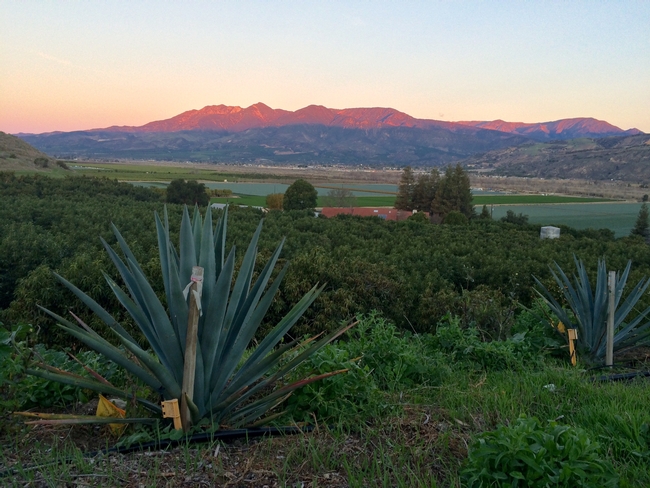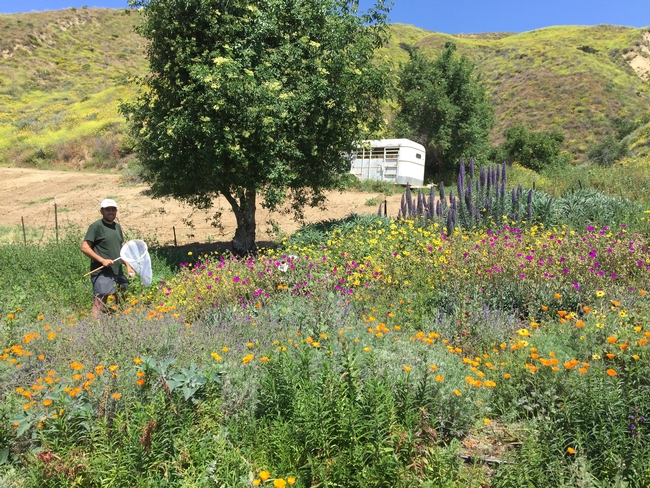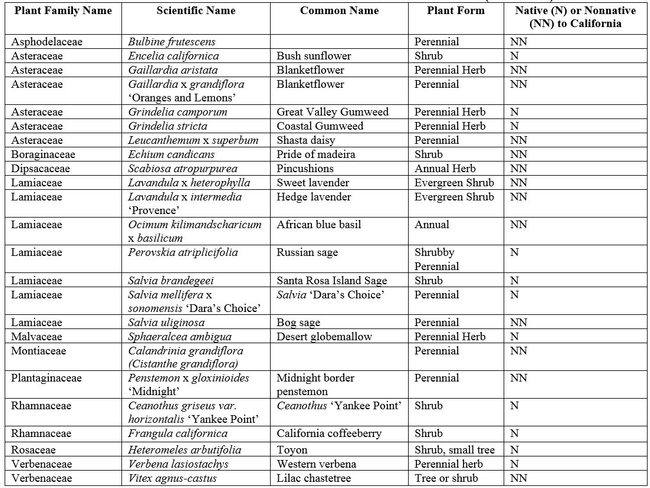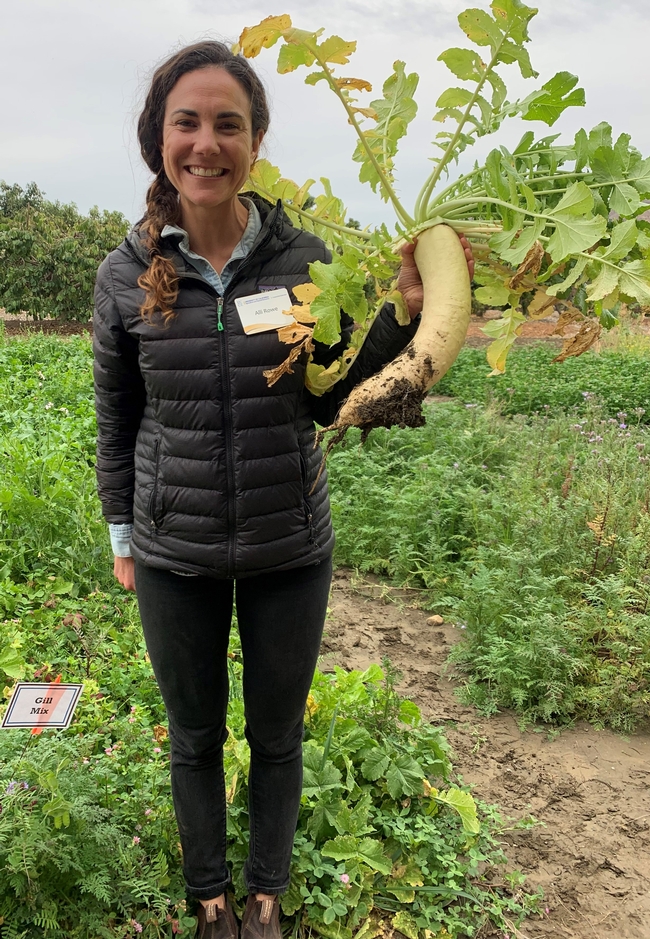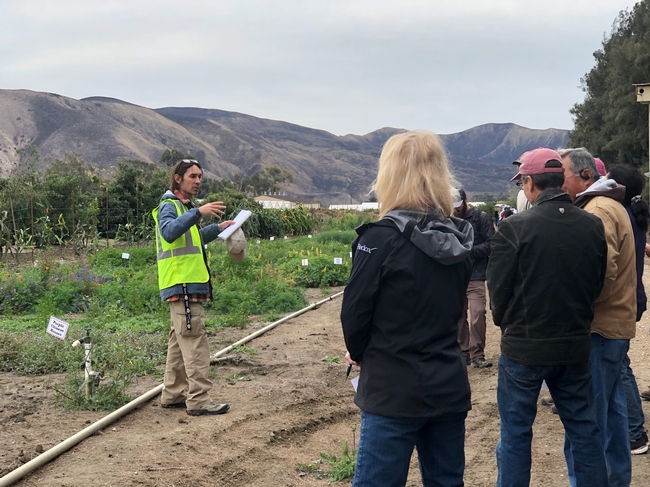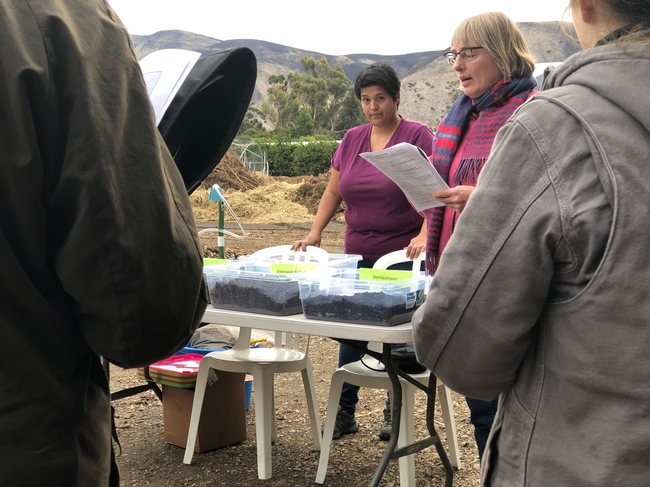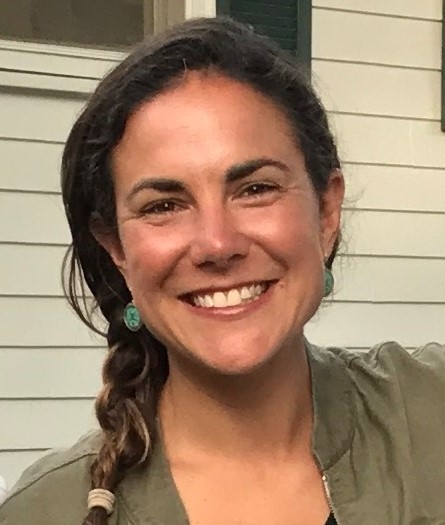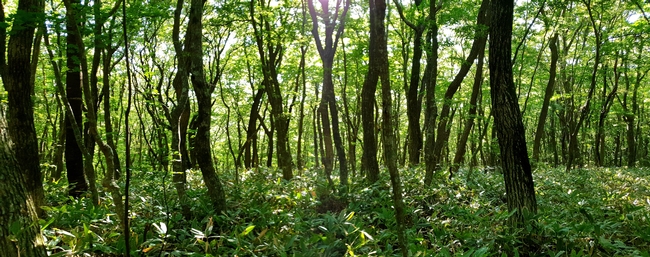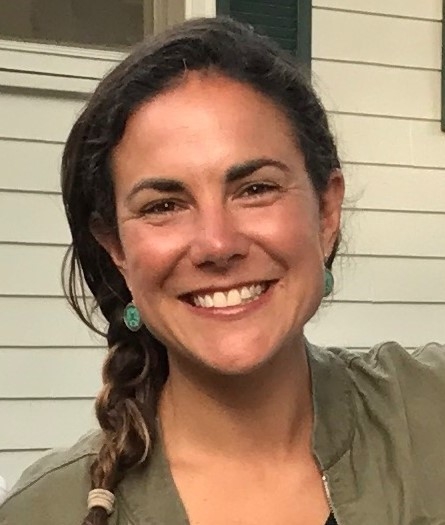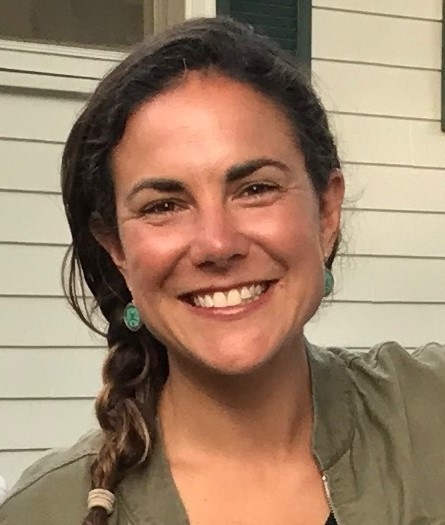
Posts Tagged: Climate Smart Agriculture
The Buzz About Hedgerows
Hedgerows are an approved practice under California Department of Agriculture's Healthy Soils Grant Program. That means, growers are eligible to receive grant funding for planting hedgerows. But what exactly are the benefits of hedgerows and why are they worth planting? As a perennial planting it can have immediate impacts on the soil, but what else? The answer lies large in the pollinators and beneficial insects they attract.
The most basic definition of a hedgerow is dense vegetation planted in a linear design. Perennial grasses, shrubs, and even short trees are all candidates for hedgerow plantings, provided they meet the conditions of the local climate and soil. Growers plant hedgerows to achieve one or more of the following desired outcomes:
- To increase habitat for pollinator and beneficial insect populations
- To create a living barrier or fence
- To reduce chemical drift or odor movement
- To intercept airborne particulate matter
- To act as a low windbreak or reduce dust
- To increase carbon storage in biomass and soils
- To provide food, shelter, and shade for aquatic organisms in nearby aquatic habitats
All of these benefits make the case for planting hedgerows on any agricultural operation. In Ventura County, avocado growers stand to see a compelling case for hedgerow plantings with particular attention to pollination services.
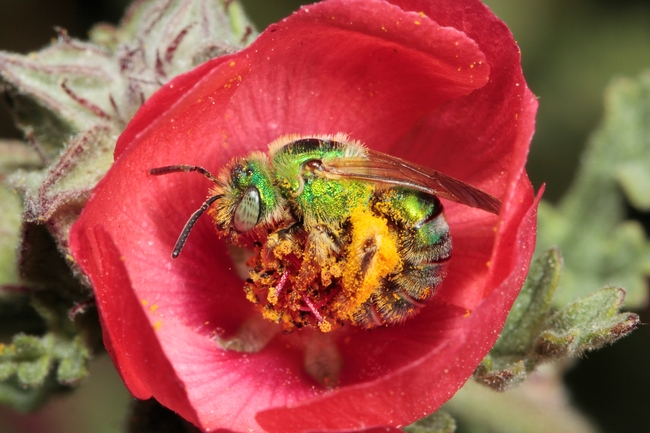
There are many different pollinators who visit avocado flowers, from native bees to flies to honey bees. Some come in the daytime, others visit at night. In the likelihood that honey bees and other pollinators will continue to decline, it is imperative to study the importance of native pollinators on key crops and identify ways to increase habitat for resident populations (NRC 2007; Nordhaus 2011; PHTF 2015; Koh et al. 2016; Sánchez-Bayo and Wyckhuys 2019; DiBartolomeis et al. 2019; Garibaldi et al. 2013). This information not only helps the pollinator populations thrive, but helps avocado growers acquire free increased pollination services for fruitful trees. Several researchers have published accounts of increased pollinator diversity and numbers in hedgerow and field edge planting studies across various agricultural systems (Heller et al. 2019; Long and Anderson 2010; Long et al. 2017; Williams et al. 2015).
In Ventura County, we are seeing some fascinating and relevant research around the impact of hedgerows on pollinators in avocado orchards. A collaborative research project involving Dr. Ben Faber, Avocado Advisor for UC Cooperative Extension Ventura County, and Dr. Gordon Frankie, professor and research entomologist at UC Berkeley and lead investigator of the UC Berkeley Urban Bee Lab, seeks to understand long-term impacts of hedgerows on pollinators of avocado trees. The project, which began in 2014 with three participating avocado ranches, has indicated increased pollinator activity, increased native bee populations, and increased diversity of species with the presence of hedgerow plantings (Frankie, Faber et al. 2020). The results indicate the importance of diversity of pollinator species, not just the honeybee, to avocados. In continuing this research, the team seeks to address the unanswered questions of which pollinators are the most effective at pollinating avocados and which are the most effective at influencing fruit set. A particularly exciting and novel aspect of this project is looking at whether or not there are nocturnal pollinators visiting California avocados. Nocturnal pollinators have been well documented in New Zealand (Pattemore et al, 2018), but none have been yet recorded in California avocados.
Maintaining hedgerows is critical to providing additional habitat for an abundance of pollinators. Creating and maintaining that hedgerow and for which pollinators can be a daunting task to embark on. Luckily for avocado growers, Dr. Frankie and Dr. Faber's team are working with Southern California growers to develop a pollinator garden manual. The manual will provide clear pictures of key pollinators and key plant species that pollinators are drawn to. Detailed imagery, descriptions, and maintenance tips will help make the decision making around planting a hedgerow much easier.
Speaking of selections, there are key plants that are drought-tolerant, easy to maintain, and well-suited for Ventura County's climate. See the table below for some ideas.
Table 1. Main Native Bee Plants Installed in Avocado Orchards 2014-2019
We seek to increase biodiversity, build soil health, and reduce energy use in our agricultural systems to improve our resiliency to climate change impacts, pests, and disease. To keep farming in our families and in our futures. Planting hedgerows is good for the pollinators, which is good for the bottom line and long-term success of the operation.
If you are an avocado grower interested in learning more about the pollinator research project, please contact Dr. Gordon Frankie at the UC Berkeley Urban Bee Lab gwfrankie@berkeley.edu.
Interested in planting hedgerows on your property? You may be able to qualify for a grant through CDFA's Healthy Soils Grant Program to plant hedgerows. Please contact Jamie Whiteford with the Ventura County Resource Conservation District at jamiewhiteford.vcrcd@gmail.comfor more information on how to apply. For those in other areas, Technical Assistance providers are able to discuss the values of hedgerows and funding opportunities for installing them in other agricultural situations: http://ciwr.ucanr.edu/Programs/ClimateSmartAg/TechnicalAssistanceProviders/
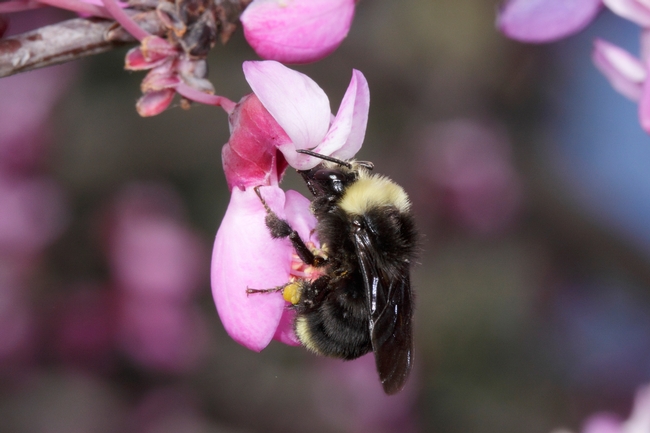
References Cited
DiBartolomeis, M., S. Kegley, P. Mineau, R. Radford, and K. Klein. 2019. An assessment of acute insecticide toxicity loading (AITL) of chemical pesticides used on agricultural land in the United States. PLoS ONE 14(8): e0220029. https://doi.org/10.1371/journal.pone.0220029.
Frankie, G., B. Faber, J. Pawelek, R. Thorp, R. Coville, C. Jadallah, E. Takele, S. I. Rios, T. Bean. 2020. Native Pollinators of California Avocado as Affected by Introduced Pollinator Gardens. International Society of Horticultural Sciences Congress. Acta Horticulturae.
Garibaldi, L.A., I. Steffan-Dewenter, R. Winfree, and 47 other authors. 2013. Wild pollinators enhance fruit set of crops regardless of honey bee abundance. Science 339:1608-1611.
Heller, S., N. K. Joshi, T. Leslie, E. G. Rajotte and D. J. Biddinger. 2019. Diversified Floral Resource Plantings Support Bee Communities after Apple Bloom in Commercial Orchards. Scientific Reports 9 Article number: 17232.
Koh, I., Lonsdorf, E. V., Williams, N. M., Brittain, C., Isaacs, R., Gibbs, J., Ricketts, T. H. 2016. Modeling the status, trends, and impacts of wild bee abundance in the United States. Proceedings of the National Academy of Sciences 113:140–145.
Long, R. F. and J. Anderson. 2010. Establishing Hedgerows on Farms in California. UC ANR Pub 8390, Oakland, CA. http://anrcatalog.ucanr.edu/Details.aspx?itemNo=8390
Long, R., K. Garbach and L. Morandin. 2017. Hedgerow benefits align with food production and sustainability goals. California Agriculture 71:117-119. 10.3733/ca.2017a0020.
NRC. 2007. Status of Pollinators in North America. National Research Council of the National Academies. National Academies Press, Washington, D.C.. 307 p.
Nordhaus, H. 2011. The Beekeeper's Lament. Harper Perennial, NY. 269p.
Pattemore, D., M. N. Buxton, B. T. Cutting, H. McBrydie, M. Goodwin, A. Dag. 2018. Low overnight temperatures associated with a delay in ‘Hass' avocado (Persea americana) female flower opening leading to nocturnal flowering. Journal of Pollination Ecology 23(14): 127-135.
PHTF: Pollinator Health Task Force. 2015. Pollinator Research Action Plan. The White House.
Sánchez-Bayo, F. and K. A. G. Wyckhuys. 2019. Worldwide decline of the entomofauna: A review of its drivers. Biological Conservation 232:8-27.
Williams, N. M., K. L. Ward, N. Pope, R. Isaacs, J. Wilson, E. A. May, J. Ellis, J. Daniels, A. Pence, K. Ullmann, and J. Peters. 2015. Native wildflower plantings support wild bee abundance and diversity in agricultural landscapes across the United States. Ecological Applications 25: 2119–2131
A Field Day for Cover Crops and Soil Health
As I have mentioned in my previous blogs, I have a certain affinity for cover crops. Mostly it is because I see enormous potential to increase the soil health and climate resiliency in Ventura County agriculture by incorporating cover crops. To shed some light on suitable cover crops for Ventura County, I seeded a cover crop demonstration at UCANR's Hansen Agricultural Research and Education Center in Santa Paula. On December 3rd, farmers, ranchers, gardeners, and community educators were invited to attend a Cover Crop Field Day to learn about different cover crops, compost, and the Healthy Soils Grant opportunity.
The field day attracted growers of all kinds from throughout the county. In attendance were orchard owners, berry and vegetable growers, ranchers, urban farmers, and enthusiastic gardeners, totaling over 100 people! Who knew so many people wanted to learn about my favorite topic?
The cover crop demonstration showcases cover crops in accordance to their functional category: biomass builders, pollinator habitat, low stature, and mustard. Mixes are seeded in long plots with their individual components seeded in smaller plots alongside. This allows for the chance to see the differences between mixes versus single species.
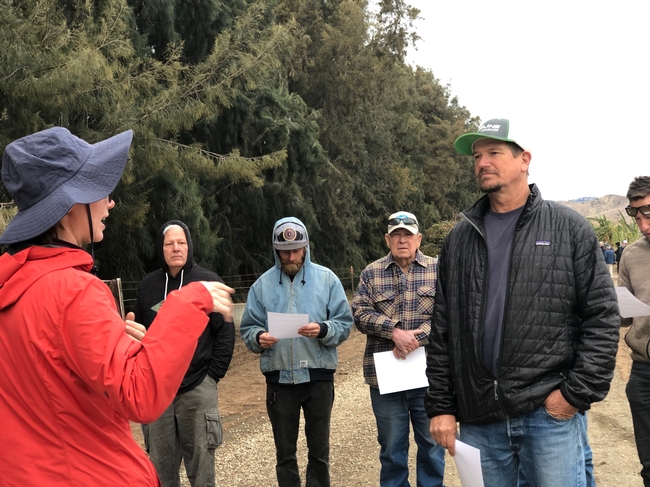
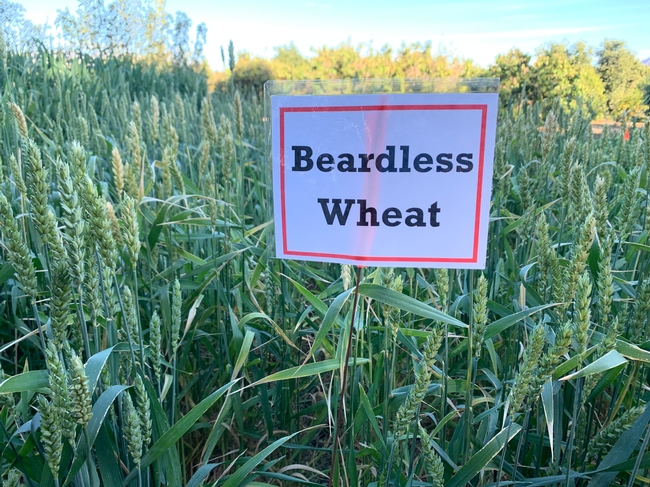
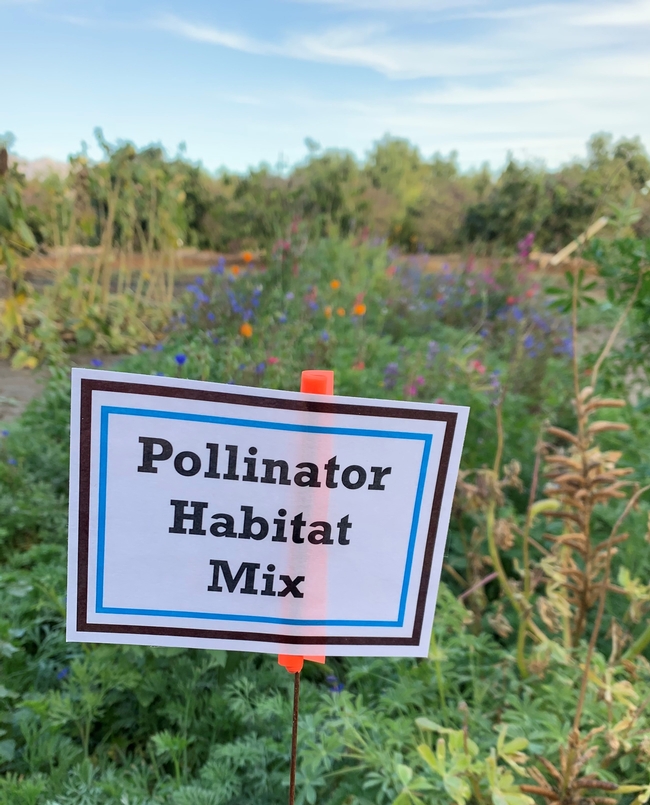
I would like to extend a deep thanks to CDFA, UCANR, the Hansen Agricultural Research and Education Center, Kamprath Seed, and S&S Seed for their generous donation of time, seed, and resources to make this demonstration and field day possible.
Want to know more about what we are up to around the state? Check out this recent press release by UCANR about the Climate Smart Agriculture team.
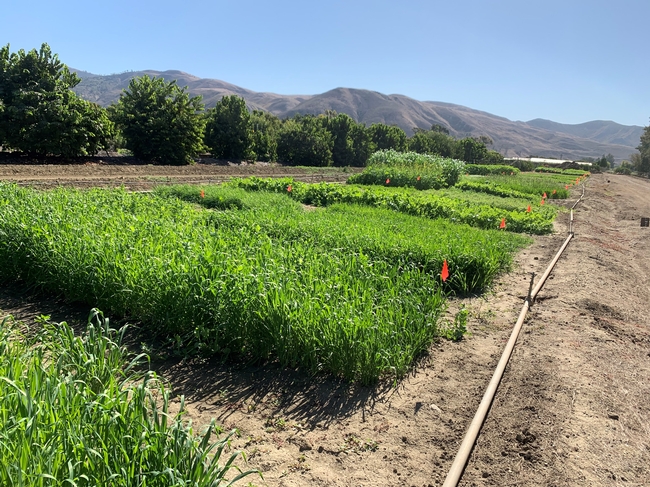
Climate smart agriculture encompasses management practices that increase soil carbon sequestration, reduce greenhouse gas emissions, improve yields and efficiencies, and promotes climate resilience. The California Department of Food and Agriculture (CDFA) supports three funding opportunities in climate smart agriculture: the Healthy Soils Program, the State Water Efficiency & Enhancement Program, and the Alternative Manure Management Program.
In a collaborative partnership, CDFA and UC Agriculture and Natural Resources have teamed up to support 10 community education specialists throughout the state to provide technical assistance and outreach for the climate smart agriculture programs. As one of these technical assistance providers, my role is to promote and support the adoption of these programs in Ventura County. If you are interested in working with me, please contact me at amfish@ucanr.edu.
Agroforestry and Climate Smart Agriculture
Authors: Alli Rowe, UCCE Ventura County and Niki Mazaroli, Strategy Research Science
There has been much buzz and renewed interest recently in planting trees as a tool to combat both the causes and impacts of climate change. But what role do trees play in climate-smart agriculture?
With respect to building healthy soils, tree canopy and leaf litter can provide protection against wind erosion and temperature extremes. Tree roots can help stabilize soils, increase nutrient cycling, and improve soil biota representative of a healthy soil system. The incorporation of trees and shrubs on agricultural landscapes, known as agroforestry, blends the practices of forestry and agriculture and can provide many ecological and economic benefits.
The USDA defines agroforestry as “the intentional combination of agriculture and forestry to create productive and sustainable land use practices” [1]. In theory, it really is this simple: adding trees or shrubs to an agricultural landscape. In practice, like most things in agriculture, it is more nuanced and, of course, site specific. Agroforestry includes a suite of practices with varying degrees of complexity that yield systems also of varying degrees of complexity. The most common agroforestry practices in the U.S. are: alley cropping, silvopasture, riparian buffers, windbreaks, and multi-story cropping (also referred to as forest farming).
Like many of the practices that fall under the header of climate-smart agriculture, agroforestry is both old and new. While the term agroforestry is relatively new, agroforestry has been practiced for millennia, yielding diverse, multistoried food forests in both temperate and tropical climates. The recent interest in agroforestry of the last few decades has been driven in part by the desire to apply the benefits of perennial agriculture to address some of the challenges of row crop and animal agricultural systems.
When considering transitioning to agroforestry practices, it is crucial to understand in advance how the incorporation of perennial woody plants will impact your existing operation. Select trees and shrubs that will grow well in your climate and the specific conditions of your farm, and will complement - not compete with! - existing crops or pasture.

In addition to plant selection, site design and management are also key. For example, where you plant trees or shrubs on your farm in relation to other crops or other elements of your farm can determine whether there is synergy or competition for water and nutrients. Site design can also determine the need for different types of management, such as in alley cropping systems where the widths of the “alleys” between rows of trees must factor in the size of any machinery used.
A local example of agroforestry in action is at King & King Ranch in Fillmore. The King family received a Healthy Soils Program Incentive Grant award to establish a windbreak along a 32-acre plot that is transitioning out of vegetable cultivation. The windbreak will protect the soil from the intense Santa Ana winds that sweep through the valley, establish living roots, sequester carbon in the woody biomass of the trees, and provide habitat for local pollinator and bird populations.
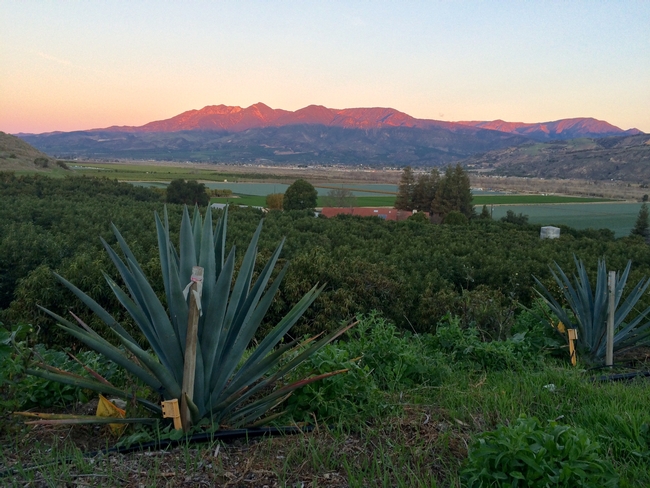
We will be highlighting more about agroforestry practices and the efforts of local producers in future blog posts, so stay tuned!
[1] USDA National Agroforestry Center. Agroforestry Practices. 2019. Available online: https://www.fs.usda.gov/nac/practices/index.shtml (accessed on 31 August 2018).
Climate smart agriculture encompasses management practices that increase soil carbon sequestration, reduce greenhouse gas emissions, improve yields and efficiencies, and promotes climate resilience. The California Department of Food and Agriculture (CDFA) supports three funding opportunities in climate smart agriculture: the Healthy Soils Program, the State Water Efficiency & Enhancement Program, and the Alternative Manure Management Program.
In a collaborative partnership, CDFA and UC Agriculture and Natural Resources have teamed up to support 10 community education specialists throughout the state to provide technical assistance and outreach for the climate smart agriculture programs. As one of these technical assistance providers, my role is to promote and support the adoption of these programs in Ventura County. If you are interested in working with me, please contact me at amrowe@ucanr.edu.
Spotlight on Ventura Farmers: Lisa Tate
Lisa Tate is coming into her own in helping manage her family's farms in Ventura County. In addition to avocado and citrus, she is one of the pioneers of coffee growing in the coastal California, a fledgling industry in specialty crops. Growing high quality coffee has been on the rise, thanks to Frinj Coffee creating a collaborative of growers with the goal of figuring out how best to produce the best product. With the treats of climate change, development, and disease threatening much of coastal California's agriculture, coffee provides a beacon of light as a potentially successful next generation crop. Lisa's interview below sheds some light on her family's farming operations and her role in fostering the future of farming.
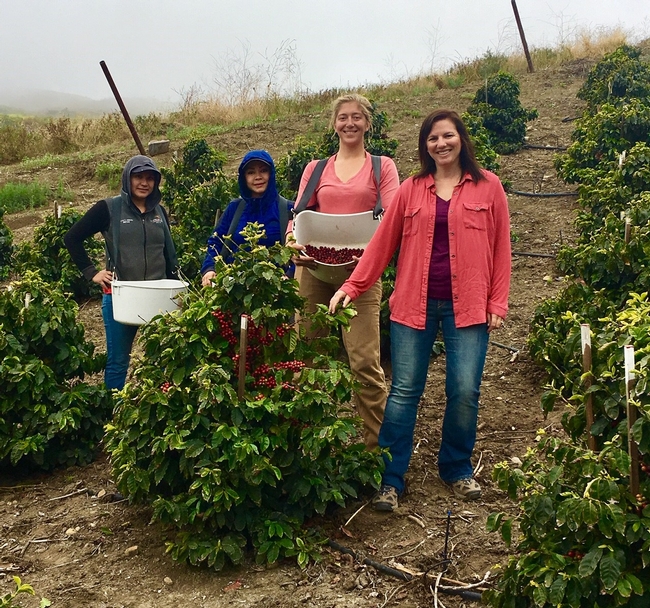
Grower Q & A
- Can you provide a brief introduction of yourself?
My name is Lisa Tate and I am a 6th generation farmer in Ventura County. My family has seven farms spread throughout Santa Paula, Saticoy, and Fillmore. I earned my B.S. degree in Agricultural Business at Cal Poly, and my M.P.A. (Master of Public Administration) from Walden University. I currently split my time between farming and taking care of my two sons ages six and nine. While I am very much in the learning stage of farming, I hope to get more involved as my children become more independent.
- What do you grow?
We grow Lemons, Avocados, Valencia Oranges, Mandarin Oranges, Pomegranates, and Coffee.
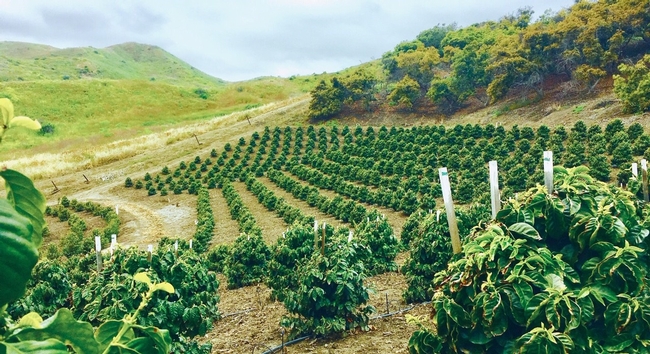
- How long have you been farming?
I have been directly farming for a year and a half, but I have been somewhat involved in family ranching for about 20 years.
- What are you doing on your land to improve soil health?
We add fertilizers, use natural avocado leaf mulch, spread our pruning mulch, and manage water runoff.
- What current issues are you facing as a farmer?
As a farmer in California, we face the rising cost of labor, increased concern about water availability, fluctuations in commodity pricing and consumer demand, tightening regulations, and challenges with trustworthy and available consumer information.
- What opportunities do you see in farming in Ventura County?
The weather is fantastic, the soil is great and I think we can grow pretty much anything. I am particularly excited about growing specialty coffee in the region and see it as a sister to California's wine growing operations. I love the idea of women grown and harvest coffee for our family farm and am actively working to see that vision through.
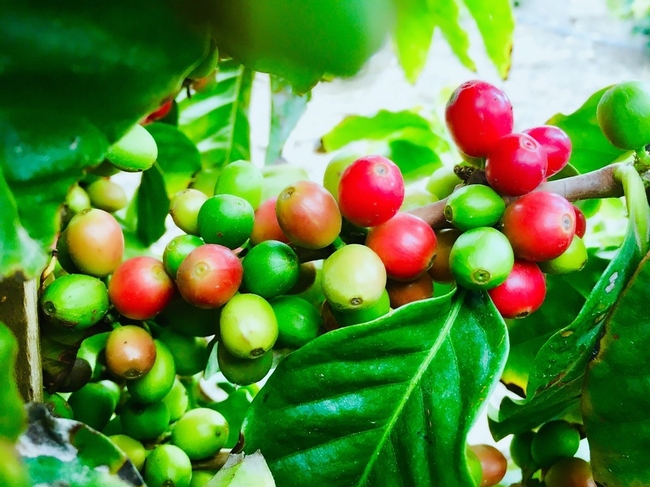
Spotlight on Ventura Farmers: Alana King
King & King Ranch operates out of Fillmore, California and has been growing citrus and avocados since 1913. Alana King, fourth generation of the King family, grew up visiting their grandparents on the ranch and four years ago returned with their partner to steward the family land. The face of the next generation of farming, Alana embraces practices that build soil health, keeps an eye on the economics of the operation, and looks forward to integrating conservation management practices to care for the land into the future. In the interview below, Alana shares with us a bit about the family farm.
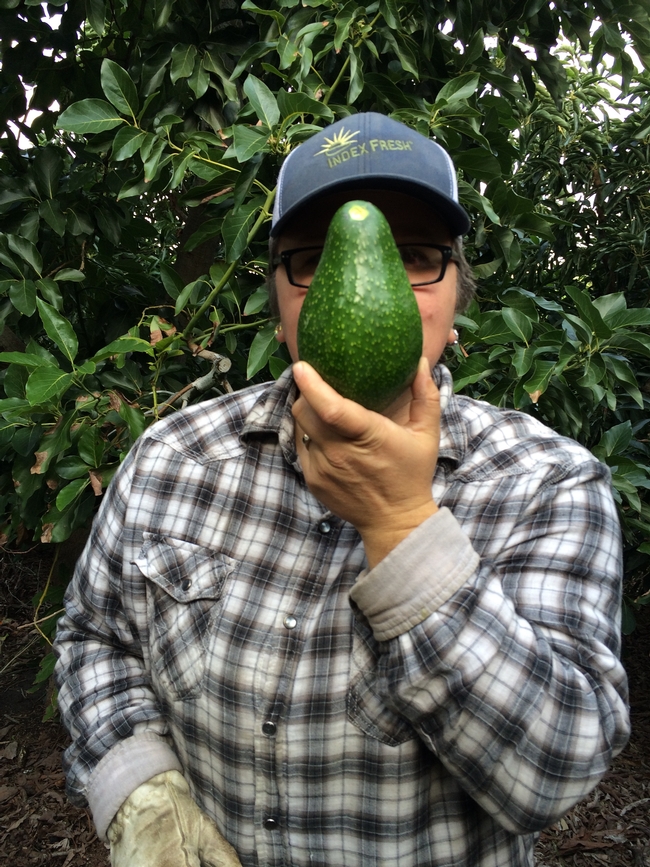
1. What do you grow?
Mainly avocados and citrus and love diversity in our farm. We grow 9 varieties of avocados, almost 30 varieties of citrus, and a smattering of other crops such as pomegranates, persimmons, figs, culinary herbs, mangos, bananas, olives, and soon-hops.
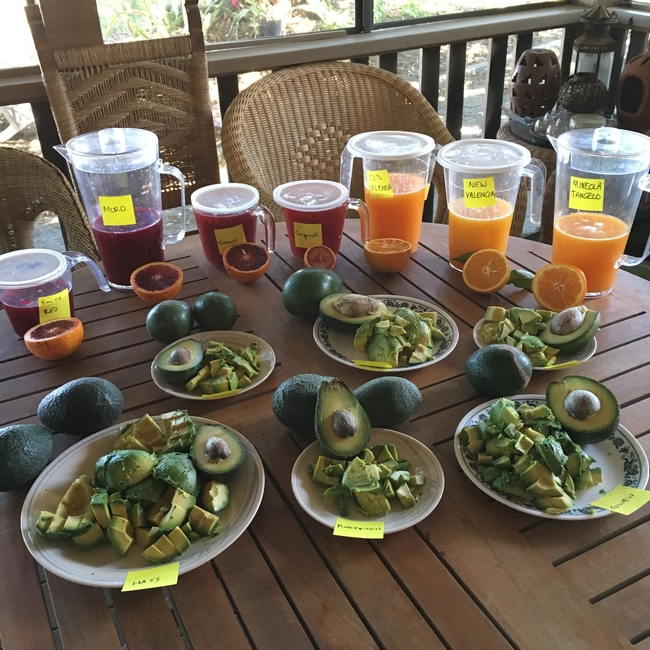
2. What has worked on your land to improve soil health?
We have entirely stopped using Roundup on weeds. Instead, we are weed whacking and mowing in an effort to control them and give the soil microbes a chance to get healthy. In some areas we have been able to apply mulch under the trees which is excellent at suppressing weeds. The mulch also results in some beautiful soil once it has time to break down so we view this as a great soil health practice for our ranch.
We're also experimenting with cover crops to build soil organic matter, provide pollinator habitat, control weeds, and improve nutrient cycling. The cover crops in between trees is a really nice alternative to the weeds. We see bees all over the clover and it has out-competed the grasses and other weeds that were there before.
3. What has not worked?
The clover can grow right around the height of our irrigation sprinklers so we still have to weed whack to clear irrigation for the trees.
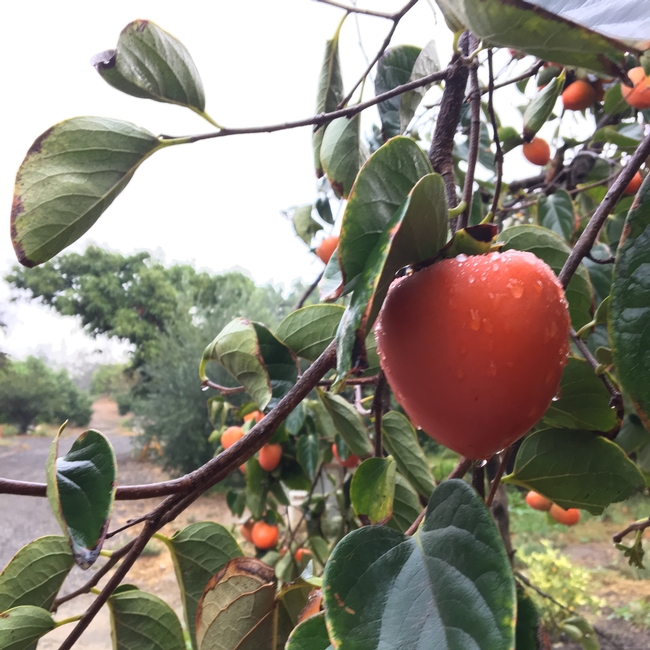
4. What current issues are you facing as a farmer?
In Ventura County we face extreme heat waves that are intensifying and becoming more frequent with climate change. As a farmer, there is always ongoing weed management, pest control, and time constraints to deal with. Additionally, we are figuring out the balance of direct marketing that generate better prices versus working with packing houses that result in lower prices, but a quick turnaround.
5. What opportunities do you see in farming in Ventura County?
It's incredible that we can grow just about anything in Ventura County. I wish I saw more restaurants showcasing the bounty that is grown all around them. There are a couple who do a great job, but by and large most places don't make the effort. Or if they do, they don't mention it on their menus. There's huge opportunity here for growing the local food movement.
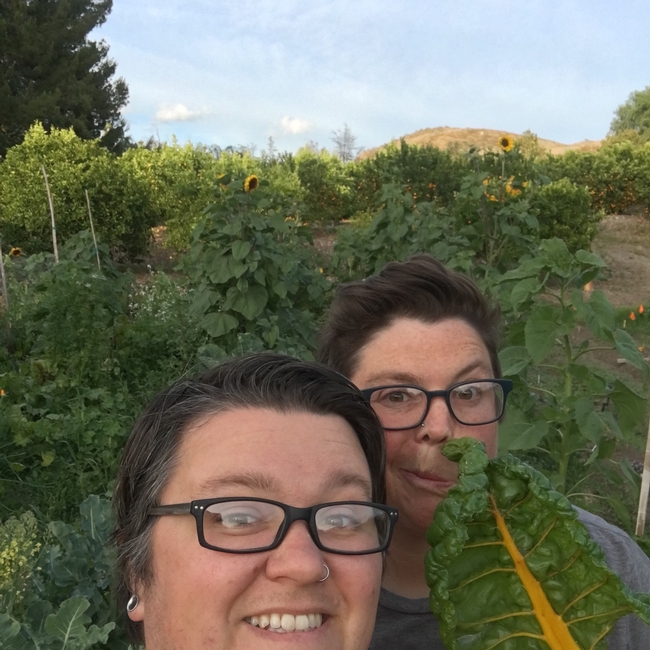
6. Have you used the University Cooperative Extension as a resource? If so, how?
Absolutely!! From advising on farm operations, to attending educational events, there have been great resources within the UC Cooperative Extension system. We have had help in applying for both the Healthy Soils Grant Program and the State Water Efficiency and Enhancement Program.
Support your local farmers! To learn more about King & King Ranch and where to find their delicious produce, visit: https://www.kingandkingranch.com/
